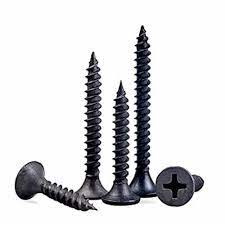oem standard drywall screw
Understanding OEM Standard Drywall Screws
Drywall screws are an essential component in the construction industry, primarily used for installing drywall sheets to wooden or metal studs. Among the various types of drywall screws available, OEM standard drywall screws stand out for their reliability and compatibility with various applications. OEM stands for Original Equipment Manufacturer, indicating that these screws are designed to meet specific standards set by manufacturers for optimal performance.
Understanding OEM Standard Drywall Screws
One of the primary features of OEM standard drywall screws is their thread design. These screws generally have fine threads, allowing for better grip in drywall materials. The sharp tip of OEM standard screws is another advantage, as it ensures easy penetration into the drywall without causing damage to the sheet itself. This feature is especially important for ensuring a clean and efficient installation process.
oem standard drywall screw

The head design of these screws is also significant, as they typically come with a bugle or flat head. The bugle head provides a larger surface area that allows the screw to sit flush against the drywall, preventing any protrusions that could be problematic during the finishing phase. This characteristic is particularly beneficial when applying joint compound or paint, as it helps achieve a smooth surface.
When choosing OEM standard drywall screws, it is important to consider the length and diameter suitable for the specific job. Standard lengths range from 1 inch to 3 inches, allowing for versatility in various drywall thicknesses. Additionally, the diameter can vary, making it essential to select the right screw size for the task to ensure optimal holding power.
In conclusion, OEM standard drywall screws are an invaluable asset in the construction and remodeling of spaces. Their durable composition, efficient design, and variety of lengths make them a preferred choice among professionals and DIY enthusiasts alike. By understanding the importance of these screws and their application, you can significantly enhance the quality and longevity of your drywall installations. As with any project, using the right materials is key to achieving a successful outcome.
-
Top Choices for Plasterboard FixingNewsDec.26,2024
-
The Versatility of Specialty WashersNewsDec.26,2024
-
Secure Your ProjectsNewsDec.26,2024
-
Essential Screws for Chipboard Flooring ProjectsNewsDec.26,2024
-
Choosing the Right Drywall ScrewsNewsDec.26,2024
-
Black Phosphate Screws for Superior PerformanceNewsDec.26,2024
-
The Versatile Choice of Nylon Flat Washers for Your NeedsNewsDec.18,2024










